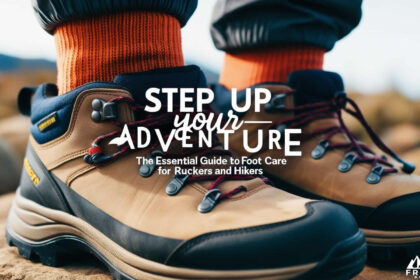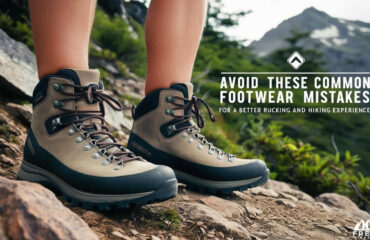
Foot care tips for ruckers and hikers to prevent injuries and enhance outdoor adventures.
Understanding the Importance of Proper Foot Care for Ruckers and Hikers
Proper foot care is essential for preventing injuries and enhancing performance during rucking and hiking. Our feet are the foundation of mobility, and their health directly impacts our overall hiking experience. Neglecting foot health can lead to discomfort, pain, and ultimately, a diminished enjoyment of outdoor activities. Engaging in proactive foot care not only boosts confidence but also allows for longer and more challenging treks.
Common mistakes in foot care include ignoring blisters until they become painful and not paying attention to the fit of footwear. Long-term issues such as plantar fasciitis or Achilles tendonitis can develop from inadequate care, affecting not only hiking but daily activities as well. By taking the time to understand and implement proper foot care, outdoor enthusiasts can ensure a more enjoyable and injury-free experience.
Choosing the Right Footwear
Selecting the right footwear is crucial for both rucking and hiking. Comfortable, durable shoes with proper fit, arch support, and good traction are essential to prevent foot injuries and enhance overall comfort. When trying on boots, it’s important to do so in the afternoon when your feet are slightly swollen, and to wear the same socks you plan to use during your activities. This ensures that you find the best fit, preventing discomfort on longer hikes.
A two-sock system is often recommended, consisting of a thin moisture-wicking sock underneath a thicker sock. This helps minimize friction and reduce the risk of blisters. Additionally, footwear should have a rugged outsole for grip on various surfaces, and it’s wise to test new shoes on shorter hikes before embarking on more extensive adventures.
Importance of Foot Hygiene
Maintaining good foot hygiene is critical for preventing blisters and other foot-related issues. Keeping feet clean and dry is essential; wet socks should be changed frequently to minimize sweat and friction. Using foot powder can help reduce moisture, but caution is advised as excessive use can lead to clumping and increased friction.
Regularly clipping toenails straight across can prevent discomfort and ingrown nails, which can be particularly bothersome during long hikes. Daily inspections of the feet for signs of irritation, cuts, or blisters allow for timely intervention. After a hike, thoroughly washing and drying the feet, especially between the toes, followed by applying a moisturizing balm, can help maintain foot health and prevent cracking, particularly in colder climates.
Blister Prevention and Treatment
Blisters can significantly impact a hiker’s ability to continue on their trek, causing pain and disability, especially when located on sensitive areas like the metatarsal heads. To prevent blisters, applying moleskin or blister pads on known hot spots can provide necessary protection. Taping feet with medical-grade tape is another effective strategy to shield against blisters.
If blisters do develop, it is important to clean and bandage them properly. For larger blisters, draining may be necessary, but this should be done with care to avoid infection. Gradually increasing distance and load during training can toughen the skin, making it less susceptible to blisters. Additionally, keeping an emergency blister kit with supplies like moleskin, antiseptic wipes, and bandages can be invaluable during long hikes.
Recommended Foot Care Routines
Establishing a regular foot care routine is essential for maintaining foot health. After hiking, engaging in foot care activities such as stretching and massaging can alleviate soreness and improve circulation. Elevating the legs and feet at night can also help reduce swelling, making recovery more efficient.
Incorporating foot exercises, like toe curls and calf raises, strengthens foot muscles and enhances flexibility. Before embarking on a hike, applying a thin layer of anti-chafing cream to areas prone to friction can help prevent irritation. A post-hike routine should include checking for any injuries and applying necessary first aid, ensuring that any issues are addressed promptly.
Addressing Common Foot Injuries
Common foot injuries that hikers and ruckers should be aware of include plantar fasciitis and Achilles tendonitis, which can be exacerbated by improper foot care. Persistent pain or injuries should not be ignored; seeking professional medical advice is crucial for recovery. Regularly monitoring for hotspots during hikes and adjusting lacing techniques can minimize movement and friction that lead to injuries.
Incorporating rest days into training regimens allows the feet to recover and helps prevent injuries from overuse. Stretching before and after hikes can also reduce tension and prevent injuries, ensuring that you remain active and pain-free during your outdoor adventures.
Enhancing Outdoor Experiences Through Proper Foot Care
Emphasizing foot care can profoundly enhance the overall experience of hiking and rucking, significantly reducing the risk of injuries. Preparation and research on foot care practices are key to enjoying outdoor activities safely and comfortably. Proper foot care routines and the correct choice of footwear can significantly impact performance and well-being during long treks.
Sharing foot care knowledge with fellow hikers cultivates a culture of safety and health within outdoor communities. Engaging in ongoing education about foot health allows ruckers and hikers to stay updated on the best practices to keep their feet happy and healthy.



